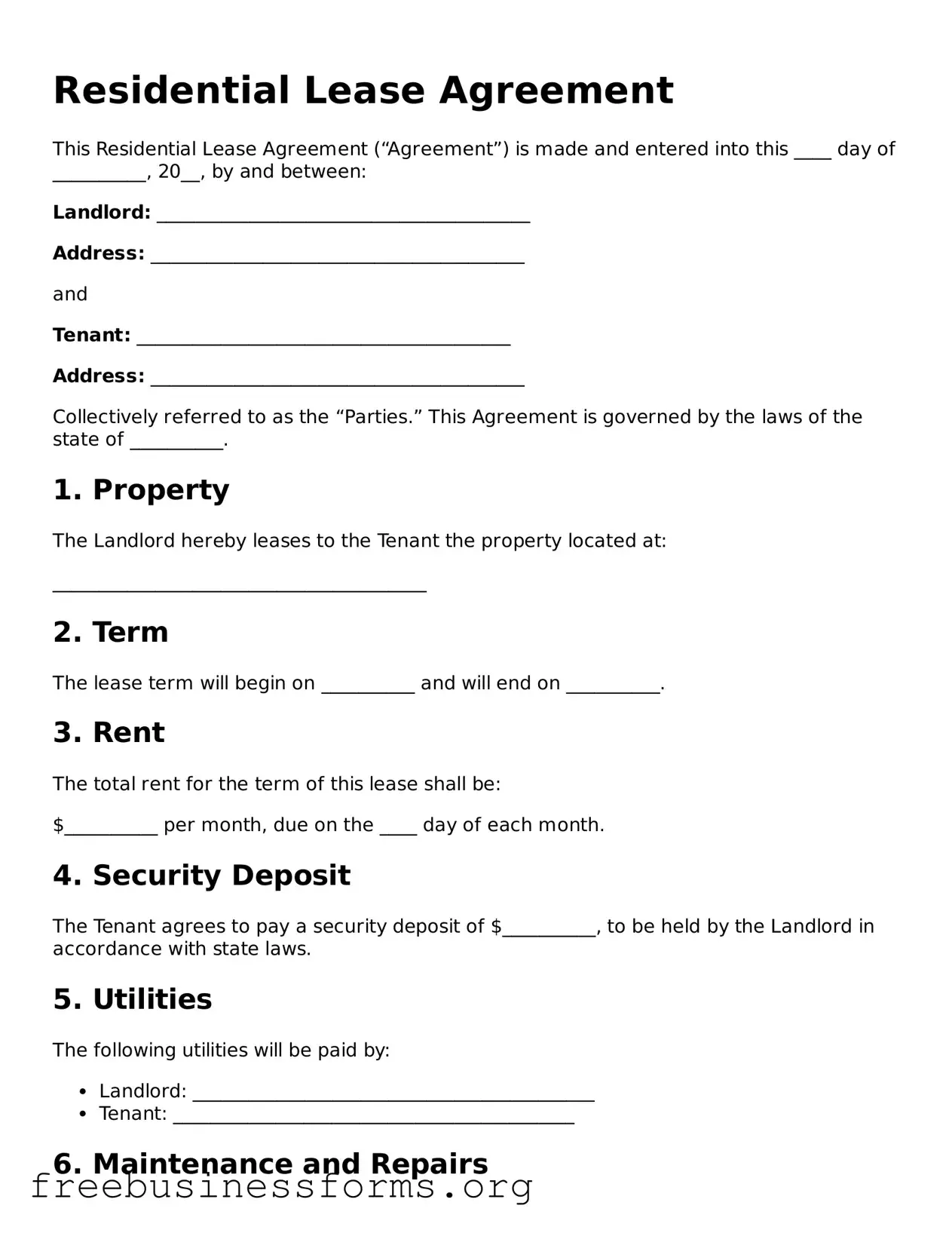Residential Lease Agreement
This Residential Lease Agreement (“Agreement”) is made and entered into this ____ day of __________, 20__, by and between:
Landlord: ________________________________________
Address: ________________________________________
and
Tenant: ________________________________________
Address: ________________________________________
Collectively referred to as the “Parties.” This Agreement is governed by the laws of the state of __________.
1. Property
The Landlord hereby leases to the Tenant the property located at:
________________________________________
2. Term
The lease term will begin on __________ and will end on __________.
3. Rent
The total rent for the term of this lease shall be:
$__________ per month, due on the ____ day of each month.
4. Security Deposit
The Tenant agrees to pay a security deposit of $__________, to be held by the Landlord in accordance with state laws.
5. Utilities
The following utilities will be paid by:
- Landlord: ___________________________________________
- Tenant: ___________________________________________
6. Maintenance and Repairs
The Tenant agrees to maintain the premises in good condition and notify the Landlord of any needed repairs.
7. Pets
The following pet policy is established:
- Allowed: __________
- Not Allowed: __________
8. Termination
Both parties must provide a written notice of ____ days before termination of this lease.
9. Governing Law
This Agreement shall be governed by the laws of the state of __________.
10. Signatures
By signing below, the Parties agree to all terms of this Agreement:
Landlord Signature: ___________________________ Date: __________
Tenant Signature: ____________________________ Date: __________
This document serves as a legally binding contract between the Landlord and Tenant. Both Parties should retain a copy for their records.
